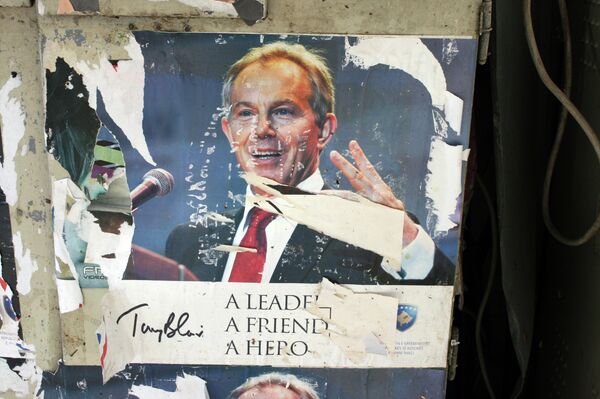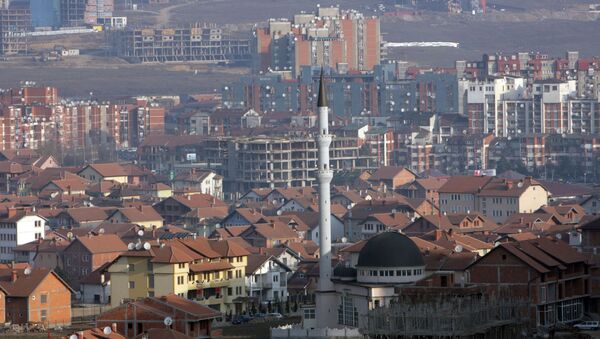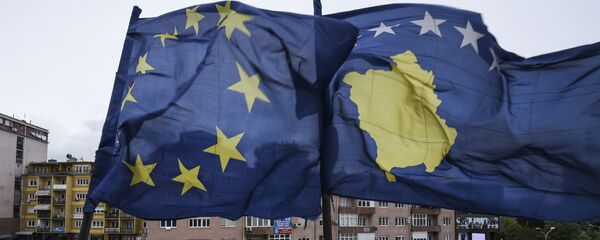Kosovo Specialist Chambers and Specialist Prosecutor’s Office has been set up to probe the actions of the Kosovo Liberation Army (KLA). The ethnic-Albanian militia supported Kosovo's independence since the 1990s and was one of the belligerents in the 1998-1999 Kosovo war. The armed conflict led to NATO airstrikes against then-existing Yugoslavia, which was made up of Serbia and Montenegro at the time.
Kosovo declared independence from Serbia in 2008. Its sovereignty has been recognized by over 100 UN members. However, Serbia, China, Russia and a number of other countries do not recognize its independence.
Some of Kosovo's prominent politicians are former KLA militants, including Assembly Chairman Kadri Veseli, Prime Minister Ramush Haradinaj and President Hashim Thaci. Haradinaj was put on trial by the International Criminal Tribunal for the former Yugoslavia (ICTY) and acquitted.
READ MORE: Problem of Kosovo Will Not Be Solved Soon — Serbian President Vucic
Special Court Investigating
Milorad Trifunovic, who chairs the association of missing persons' relatives in Kosovo and Metohija, told Sputnik that the special court was working and his group met its prosecutors' team.
"We know that they have already questioned 12 former members of the KLA," Trifunovic said.
In 2010, a Council of Europe report by Dick Marty alleged that some of the KLA members not only captured and tortured Serbians and Albanian Kosovars, but in some cases harvested organs for sale. His report served as a starting point, which led to the establishment of a special court.
Trifunovic pointed out that Marty's report supported the association's belief that the trade in human organs took place.
"There is some information and some ideas suggesting that our countrymen were transported to Albania and Macedonia, where organs were removed, after which they were probably killed and buried there," Trifunovic said.
The association collected data about 941 people who went missing in the region since 1998. These people included Serbs, Albanians and Romani, aged between 16 and 82; most of them men aged between 25 and 42. The remains of 371 of them were found in various mass graves across Kosovo and given to the families after DNA analysis.
READ MORE: US Designates Ex-Serbian General for Murder of 3 Albanians After Kosovo War
Investigations Need New Impetus
The attempts to discover the truth about the missing people did not receive enough support from the Kosovar authorities, Trifunovic said.
"In 2016, there was not a single exhumation, families were not given remains of a single person. In 2017, one body was given, out of 430 unidentified ones kept in Pristina morgue. After the war, people were often buried without any DNA analysis, based on personal belongings, others coming to identify them, and we believe that many people were buried under someone else's name… We tried to launch a review, but the Kosovar-Albanian authorities have not been very welcoming," Trifunovic said.
According to the association chair, the European Union Rule of Law Mission in Kosovo was able to help with the investigation in the past. However, the mission's mandate was changed to monitoring and guidance in 2018. The local law enforcement began investigating the missing people cases and the work then stopped.
"In March, there must be a meeting of working groups [of Belgrade and Pristina on missing people], let us see if it takes place. We gave them the information about all suspected burial places," Trifunovic said.
Witnesses Scared to Talk
The search for truth is complicated because witnesses of kidnappings and killings do not want to talk out of fear for themselves and their families, according to Trifunovic.
"We are mostly hoping for the special court in the Hague, hoping that it will answer our questions. But there is one more problem — witness protection… As relatives of missing people, we cannot name our sources, because our relatives are definitely dead, but what will happen to them [witnesses] and their families?" the association chair said.
Carla Del Ponte, who was a chief prosecutor of the ICTY, complained in 2004 of witness intimidation problems, saying that it was widespread in all of former Yugoslavia, but in particular in Kosovo.

People Went Missing Despite International Forces' Presence
According to Trifunovic, about 80 percent of the people whose data his organization has collected disappeared after the ceasefire agreement was signed in 1999 and as the UN and NATO international forces were providing security.
"They arrived to support peace and security, but it was in their presence that 80 percent of these people, mostly Serbs, went missing in Kosovo and Metohija," Trifunovic said.
Under UN Security Council Resolution 1244, the United Nations Interim Administration Mission in Kosovo (UNMIK) was established in 1999 to ensure peace and stability in Kosovo and in the larger region.
According to Marty's report, "the international authorities in charge of the region" in the early 2000s either decided not to investigate the evidence of such criminal activity or did so "superficially."
The views and opinions expressed in this article do not necessarily reflect those of Sputnik.


